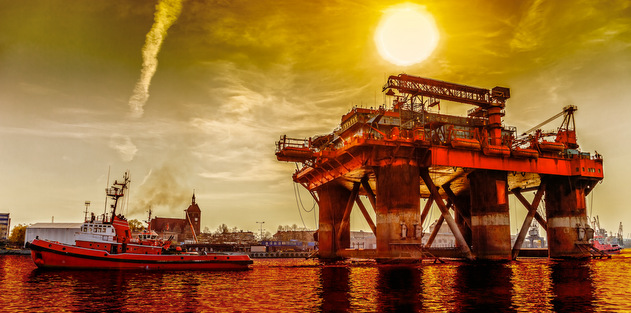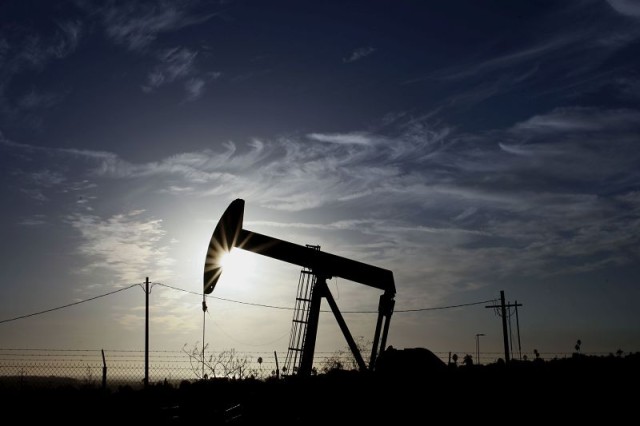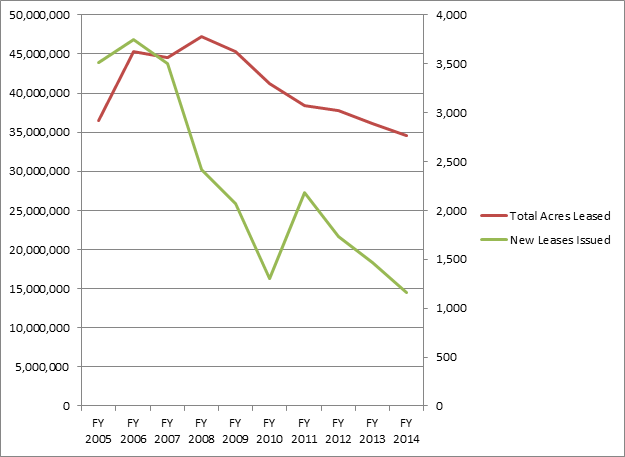Oil Boom and Government Glut
The government buys 5 million barrels of oil for its stockpile by JEFFREY A. TUCKER.
It’s a sweet thing when Uncle Sam becomes a mega-buyer of your product.
While the price of oil continues to plunge to record lows, drivers are celebrating, and oil executives are sweating it out. But never fear, the government is running to the rescue — of the oil industry. The Department of Energy is planning to enter the market with a purchase of 5 million barrels. It’s necessary for national security, don’t you know.
Oil prices have fallen 55 percent in the last year. The trend defied every expectation, and it’s been wonderful for drivers, businesses, and consumers. It’s an impressive illustration of how prices reveal information about underlying resource realities.
Technology has blasted away the last decade’s wild and misguided fears of a shortage. Production is at an all-time high in response to unprecedented demand. The stunning events have been a boon to consumers, as downward pressure keeps pushing on prices at the pump.
The market is giving us oil as never before. It is not failing. It is succeeding beyond belief.
“Experts” keep saying the trend is temporary, but no one knows for sure. We could see $20 per barrel before year’s end.
The new purchase is for the Strategic Petroleum Reserve, a hoary leftover from Gerald Ford’s presidency. It pays oil companies for their products, as the DoE says, “to protect the United States from severe petroleum supply interruptions through the acquisition, storage, distribution and management of emergency petroleum.”
But far from seeing “disruption,” we are seeing more and better distribution. You can tell from its language that this is the most thrown-back program imaginable. It illustrates a complete lack of understanding of the price system, which is the signaling mechanism that reveals shortages and surpluses in the market. Prices coordinate the interests of buyers and sellers with facts about underlying scarcity. Rising prices signal facts about supply and demand, incentivizing less consumption and more production. Falling prices encourage consumers to buy more and producers to make less.
The price system actually works, unlike these lame attempts at central planning. The proposed purchase by the government constitutes only half a day’s worth of production in the United States — as if an intervention so small would make the difference between prosperity and disaster.
If it is really necessary to have a “strategic reserve” for oil, wouldn’t we also have to have the same for carrots, beef, iPads, tennis shoes, wine, or raisins? Actually, we have one of those too: a National Raisin Reserve, an equally bizarre anachronism from the Great Depression that requires raisin farmers to give as much as half their crop to the government in order to keep raisin prices high.
The full Strategic Petroleum Reserve covers less than two months of US production, which is itself only 10 percent of world production. Why not make it six months? Why not a year? And what’s a half-day, more or less? There is no rational way to decide.
Let’s imagine there really were some weird catastrophe that caused all distribution to stop. Prices would surge through the roof and inspire a gigantic increase in oil production from all over the world.
But let’s also pretend, because of some foreign policy issue, that the United States also stopped all imports, and then tapped the “Reserve.” It’s not the consuming public that would benefit. It would be the government itself, making sure that the military and all the “essential” government agencies stayed running.
In other words, this program is not about you and me, even in theory. To understand why the Reserve exists, look who benefits most directly: the oil industry itself. It’s a guaranteed market, a kind of subsidy to big business, just as food stamps are for agriculture. Perhaps this is why this proposal is being made again right now, just as prices are falling so dramatically. It’s just thinly veiled corporate welfare.
The Reserve-subsidy came about during a period when oil prices were controlled by the government, and the oil industry was facing very serious financial pressure. The Reserve helped to alleviate that pressure — a classic case of how one intervention leads to others, until all special interests are satisfied with the new equilibrium. The SPR was a fix for a “market failure” created by government-failure.
Oil prices haven’t been controlled since the late 1970s, completely removing any objective conditions for why this needs to exist at all. The only time we ever had gas lines was when we had a “czar” telling people how much they could buy and what they were allowed pay for gas, and the lines disappeared when the controls were removed.
What harm does the Strategic Petroleum Reserve do? Most of the time, it’s simply an unconscionable waste of taxpayer money. When its supplies are actually deployed, dumping oil on the market from a government-mandated reserve, it puts downward pressure on the price and reduces the incentive to step up production right when it is needed most.
The Reserve is a perfect illustration of the dangers of any government program: once one starts, it is extremely difficult to get rid of it, no matter how irrelevant the original rationale has become. Here we are 40 years later, with astounding increases in supply and the technology for refinement and distribution, but we are still paying for this economically illiterate central plan for stockpiling oil.
It needs to be completely abolished, just as Ronald Reagan suggested in 1980 (before he later changed his mind to favor its expansion). The SPR is just like the Post Office in this sense: it exists solely due to that magic combination of economic ignorance and special-interest pleading.
ABOUT JEFFREY A. TUCKER
Jeffrey Tucker is a distinguished fellow at FEE, CLO of the startup Liberty.me, and editor at Laissez Faire Books. Author of five books, he speaks at FEE summer seminars and other events. His latest book is Bit by Bit: How P2P Is Freeing the World.
EDITORS NOTE: The featured image is courtesy of FEE and Shutterstock.







